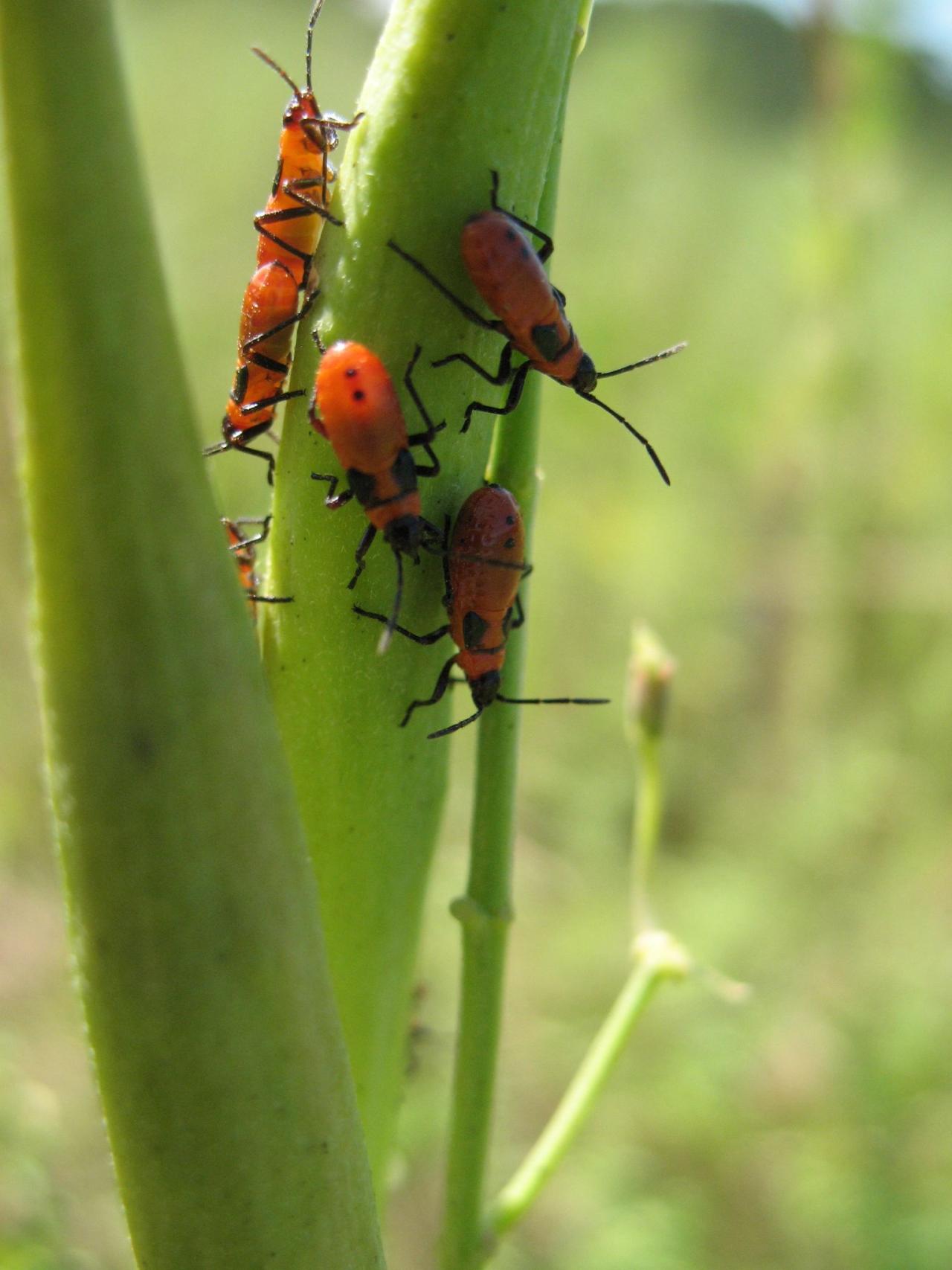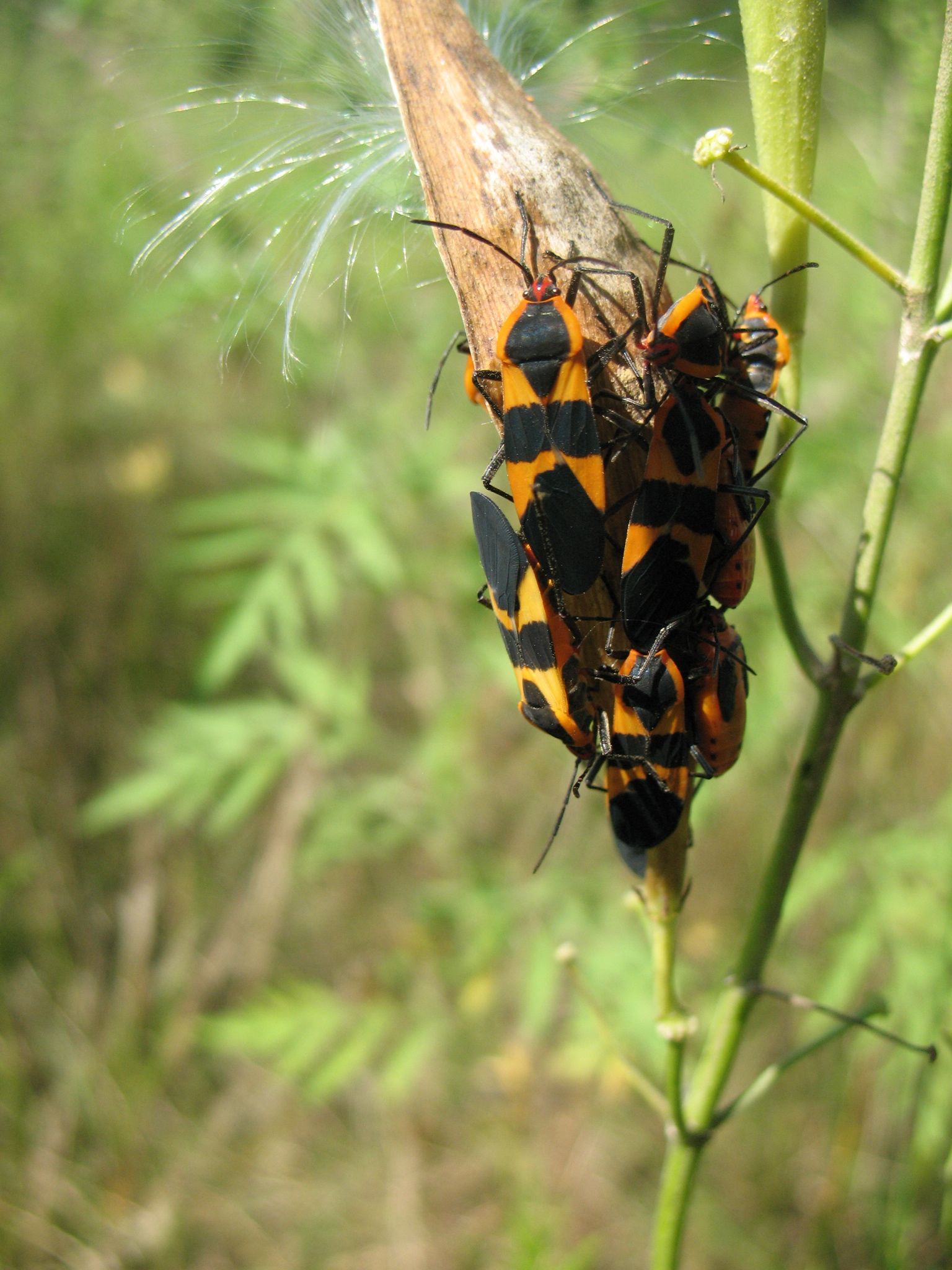Monarchs aren't the only milkweed dwellers preparing for flight

Milkweed plants are fascinating because of the variety of insects and mini-ecosystems that are found on them. Many milkweed inhabitants take up the toxic compounds of the plant, especially cardiac glycosides, and incorporate them as part of their own defense mechanism. These compounds can be quite toxic or even fatal if consumed in large enough quantities.
To warn predators of their toxicity, and thus avoid being eaten, most animals that are toxic have evolved bright coloration and patterns, with orange and black being a particularly common combination. Thus we see the iconic monarch butterfly, well known not only for its toxicity, but also for its spectacular annual migration, accomplished over several generations each year. Most people also realize it is entirely dependent on milkweed as the exclusive food plant of the larvae. Few people, however, are probably aware that there is another denizen of milkweed plants that shares all these traits – dependence on milkweed, toxic defense, orange and black coloration, AND multi-generational annual migration. Introducing the milkweed bug!
Milkweed bugs (Oncopeltus fasciatus) overwinter in Mexico and southern states, then gradually make their way north in spring and summer over several generations, as eggs hatch and mature to adulthood. Adults arrive in Minnesota in mid-summer and females lay their eggs on milkweed plants, where the emerging young will mature to adulthood. Unable to go dormant or otherwise survive the cold winter, adults migrate back to southern regions in fall, where they resume life on milkweed plants in warmer climates.
Like all true bugs, milkweed bugs have a straw-like mouthpart that they insert into plants to extract nutrients. In this case they primarily eat the nutrient rich seed of milkweed plants, which they consume in liquid form, after injecting the seed with enzymes to break it down.
Sources:
- Douglas Tallamy, 2009, Bringing Nature Home: how you can sustain wildlife with native plants
- Bug of the week website
